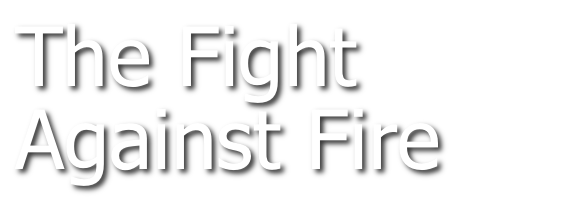EXPERIENCE > SCIENCE TOOLS > DEALING WITH EMERGENCIES > WILDFIRE
Oregon is one of the most forested states in the country. Nearly half of our state’s natural areas are covered with forest, and this natural resource is vital to not only our continuing environmental health, but also our economy. Rural communities in particular may depend on forestry as part of their livelihood, and according to some estimates, nearly one out of every twenty jobs in Oregon is dependent on forestry. With so much depending on our forests, the prevention and containment of wildfires is critical.
As the effects of climate change have worsened, conditions like longterm drought have made wildfires more frequent and destructive. Studies by Oregon State University concluded that “wildfires have increased in size in most western forests since the 1980s, and much of this increase is associated with a warmer, drier climate… Climate projections suggest that these trends will likely accelerate in the near future.”
In light of these findings, it is clear that more of Oregon’s resources will be needed to mitigate climate change, protect the forests, and deal with wildfires.
Oregon is one of the most forested states in the country. Nearly half of our state’s natural areas are covered with forest, and this natural resource is vital to not only our continuing environmental health, but also our economy. Rural communities in particular may depend on forestry as part of their livelihood, and according to some estimates, nearly one out of every twenty jobs in Oregon is dependent on forestry. With so much depending on our forests, the prevention and containment of wildfires is critical.
As the effects of climate change have worsened, conditions like longterm drought have made wildfires more frequent and destructive. Studies by Oregon State University concluded that “wildfires have increased in size in most western forests since the 1980s, and much of this increase is associated with a warmer, drier climate… Climate projections suggest that these trends will likely accelerate in the near future.”
In light of these findings, it is clear that more of Oregon’s resources will be needed to mitigate climate change, protect the forests, and deal with wildfires.
Fire Isn't Always Bad, But It's Almost Always Misunderstood
Fire is a naturally existing and important factor in keeping forests and wildlands healthy. Naturally occurring fires or controlled, prescribed burns reduce underbrush and dead vegetation, allowing plant communities to grow and thrive. Burns also create new foraging areas for animals, and in some cases enabling plant seeds to germinate. Learn more about fire ecology here. However, people tend to view forest fires as being universally bad, and there’s no doubt that they can be extremely destructive.
It is a sad fact that three-fourths of the wildfires in Oregon are human-caused and therefore preventable. Whether these fires start due to carelessness, ignorance, or malicious intent, they cause the majority of environmental damage in the state.
Unattended or unextinguished campfires are a major source of wildfires. Many campers may build fires even when they are prohibited, or fail to douse them thoroughly with water and dirt until they are cold. The heat of vehicle engines — especially off-road vehicles — can also start a wildfire. During dry conditions, grass or other plant life can become naturally occurring tinder for a hot engine.
Often, the careless use of flammable items, like cigarettes and fireworks, can create a wildlfire. In September 2017, the Eagle Creek Fire raged through the Columbia River gorge, destroying approximately 50,000 acres (202 km2), which included famous landmarks and historical sites. It was later determined that the cause was a teenage boy using illegal fireworks.
It is a sad fact that three-fourths of the wildfires in Oregon are human-caused and therefore preventable. Whether these fires start due to carelessness, ignorance, or malicious intent, they cause the majority of environmental damage in the state.
Unattended or unextinguished campfires are a major source of wildfires. Many campers may build fires even when they are prohibited, or fail to douse them thoroughly with water and dirt until they are cold. The heat of vehicle engines — especially off-road vehicles — can also start a wildfire. During dry conditions, grass or other plant life can become naturally occurring tinder for a hot engine.
Often, the careless use of flammable items, like cigarettes and fireworks, can create a wildlfire. In September 2017, the Eagle Creek Fire raged through the Columbia River gorge, destroying approximately 50,000 acres (202 km2), which included famous landmarks and historical sites. It was later determined that the cause was a teenage boy using illegal fireworks.
The Job of Fighting Fires
Whatever causes a wildfire, it takes highly-trained men and women to contain and extinguish them. These professionals are known as rangeland or wildland firefighters or simply as “hotshots.” Firefighters who fly into remote areas may be called helitack crews or smokejumpers. Whatever name they go by, hundreds of these firefighters may be needed to deal with a single burn, often working under life-threatening circumstances in remote and dangerous terrain.
Aside from extinguishing fires, typical duties of a wildland firefighter may include preparing firebreaks (an obstacle to the spread of fire, such as a strip of open space in a forest), rescuing trapped people, saving wildlife, providing emergency medical care, and operating a variety of vehicles and equipment.
In order to better understand how grueling this job can be, our Oceanscape Network Youth Correspondents have created the video shown below. Although the video presents firefighting as a series of fun exercises, the activities are based on actual skills used by wildland firefighters.
Aside from extinguishing fires, typical duties of a wildland firefighter may include preparing firebreaks (an obstacle to the spread of fire, such as a strip of open space in a forest), rescuing trapped people, saving wildlife, providing emergency medical care, and operating a variety of vehicles and equipment.
In order to better understand how grueling this job can be, our Oceanscape Network Youth Correspondents have created the video shown below. Although the video presents firefighting as a series of fun exercises, the activities are based on actual skills used by wildland firefighters.




